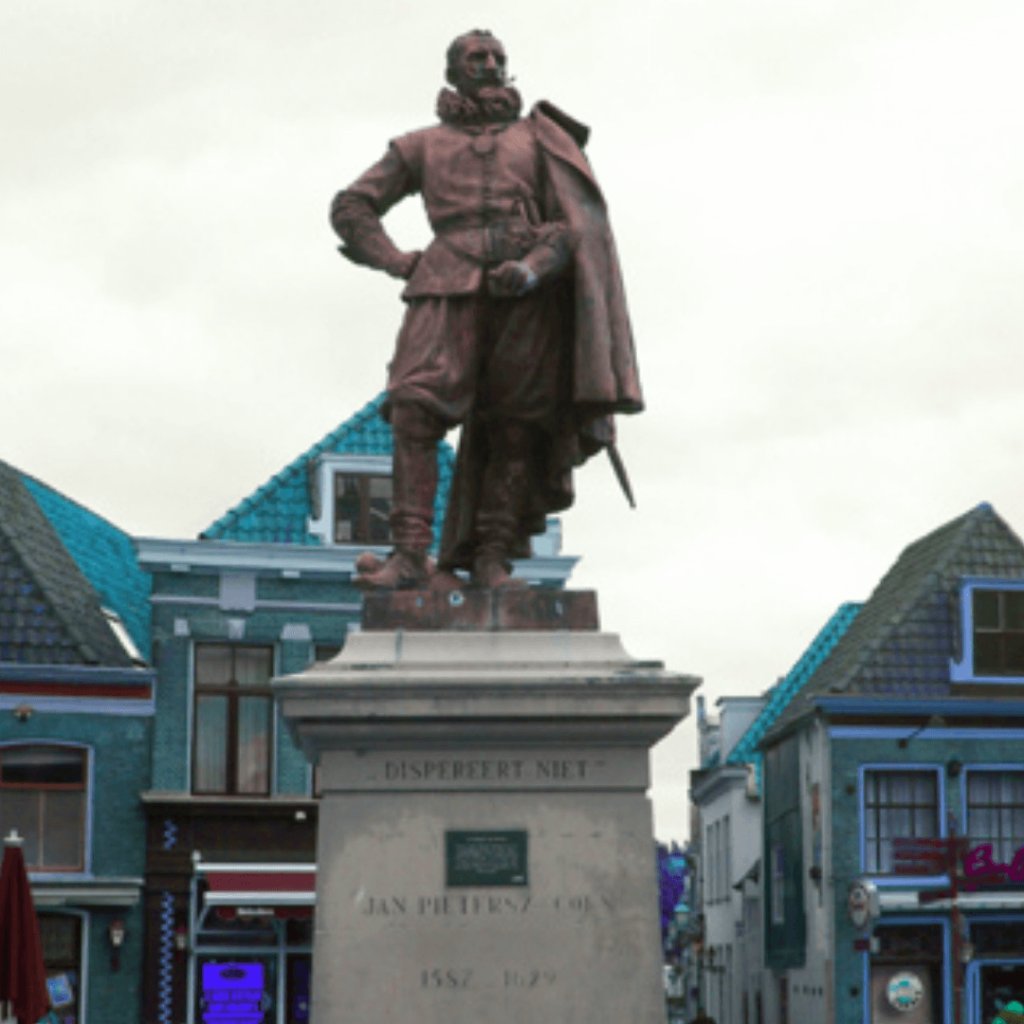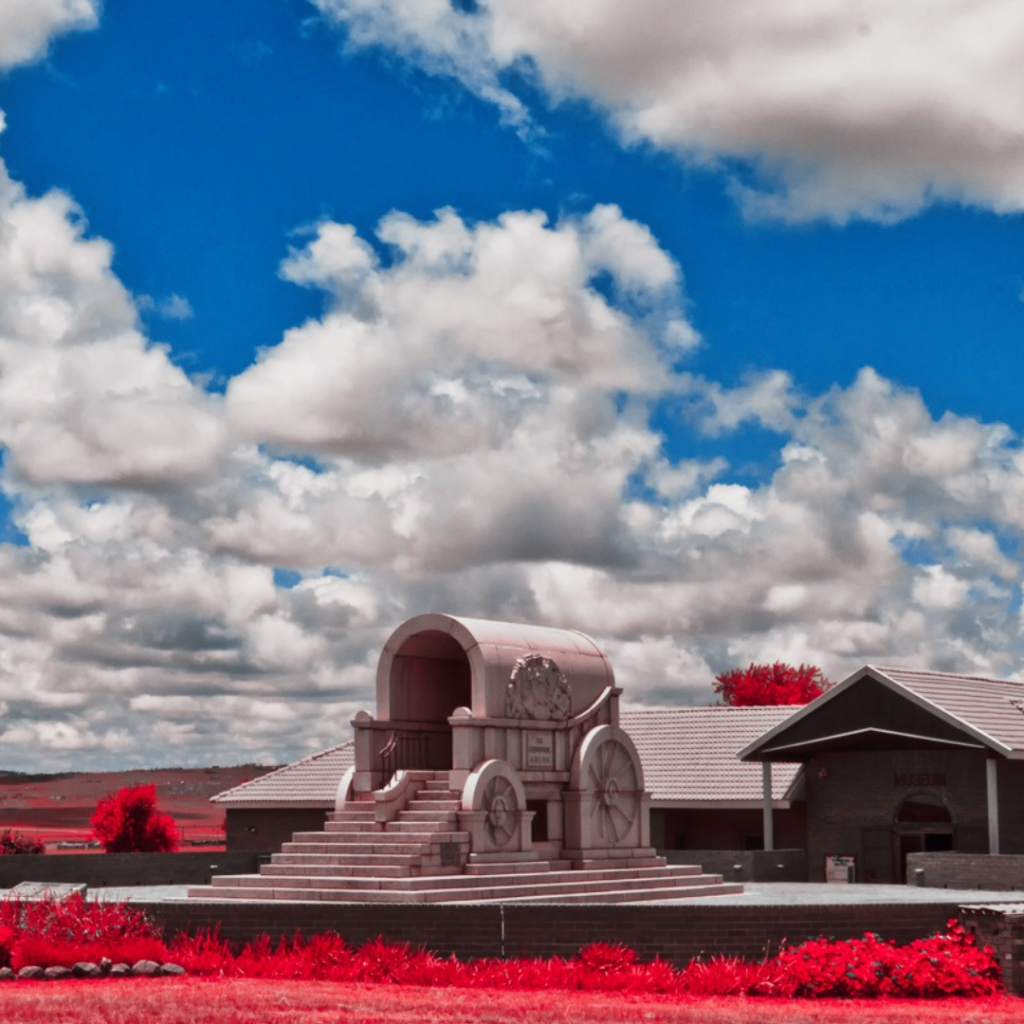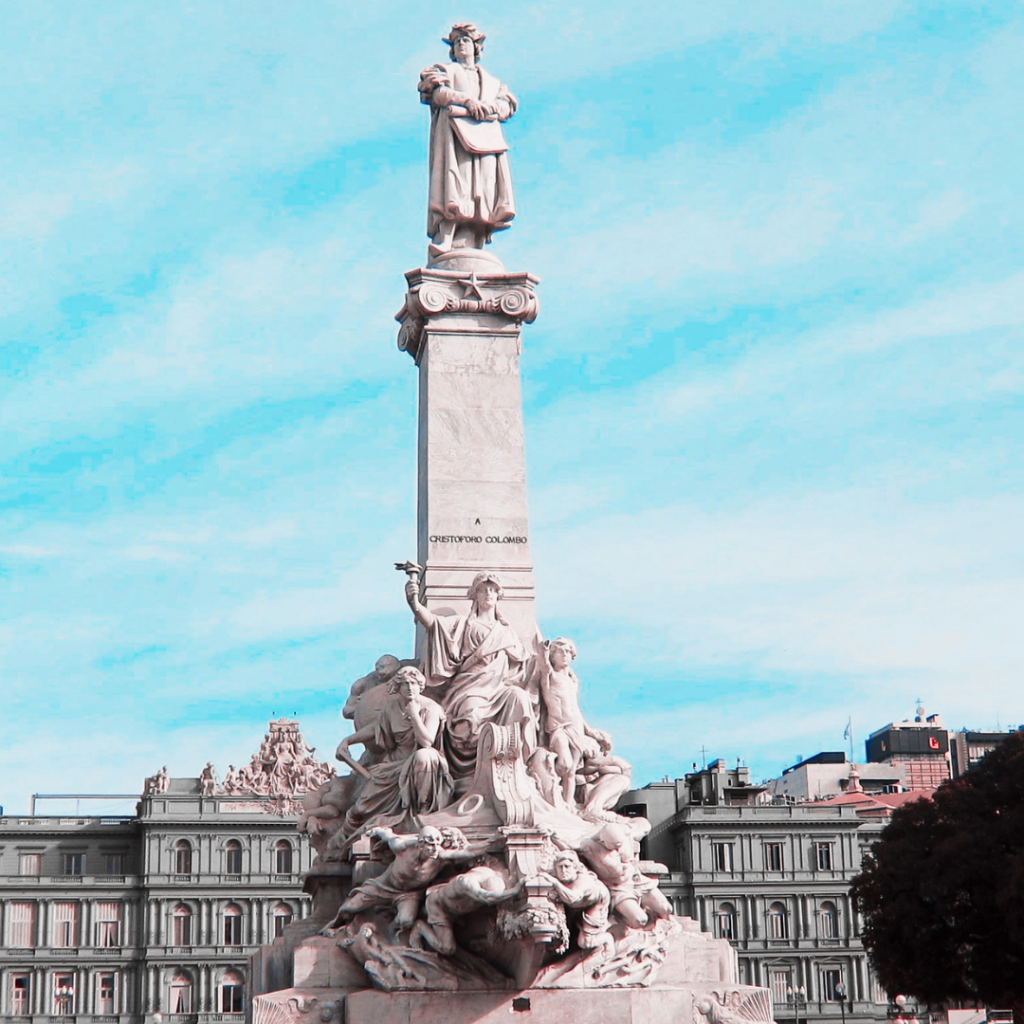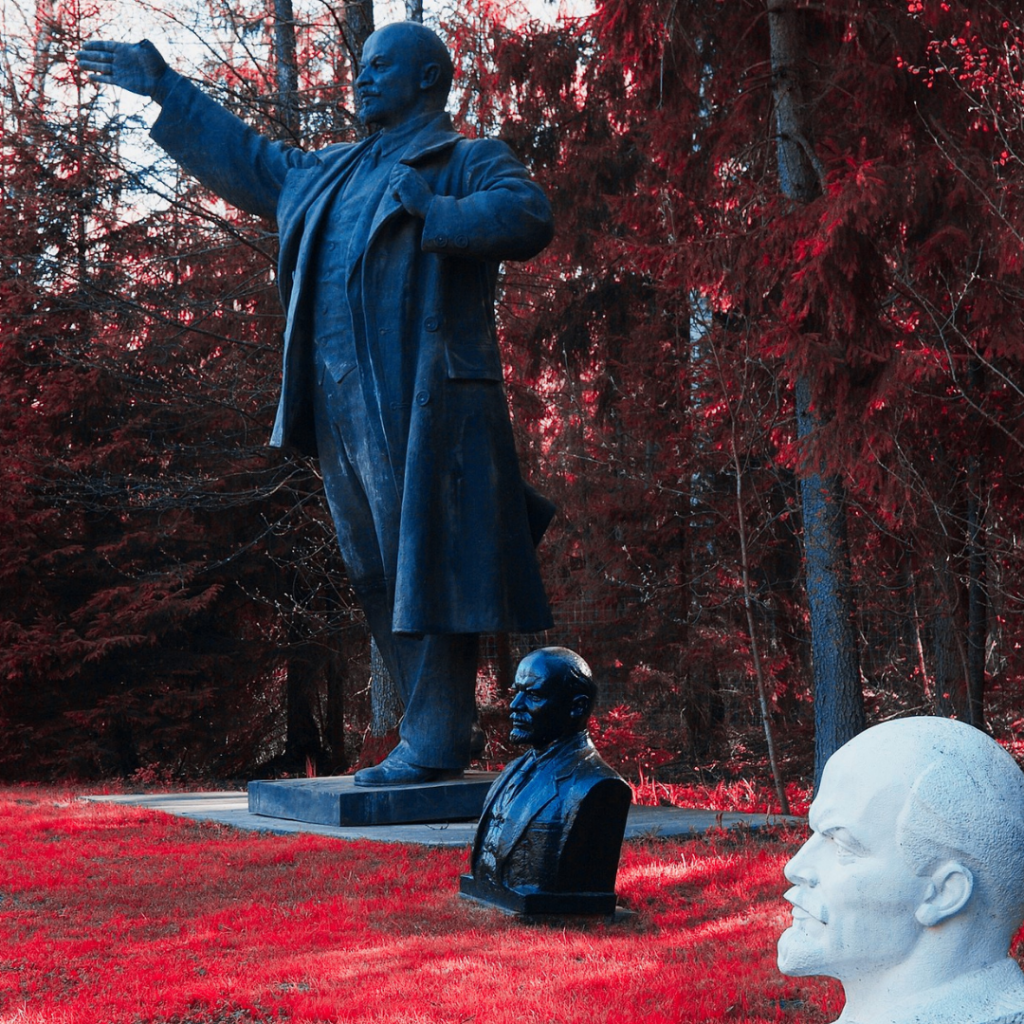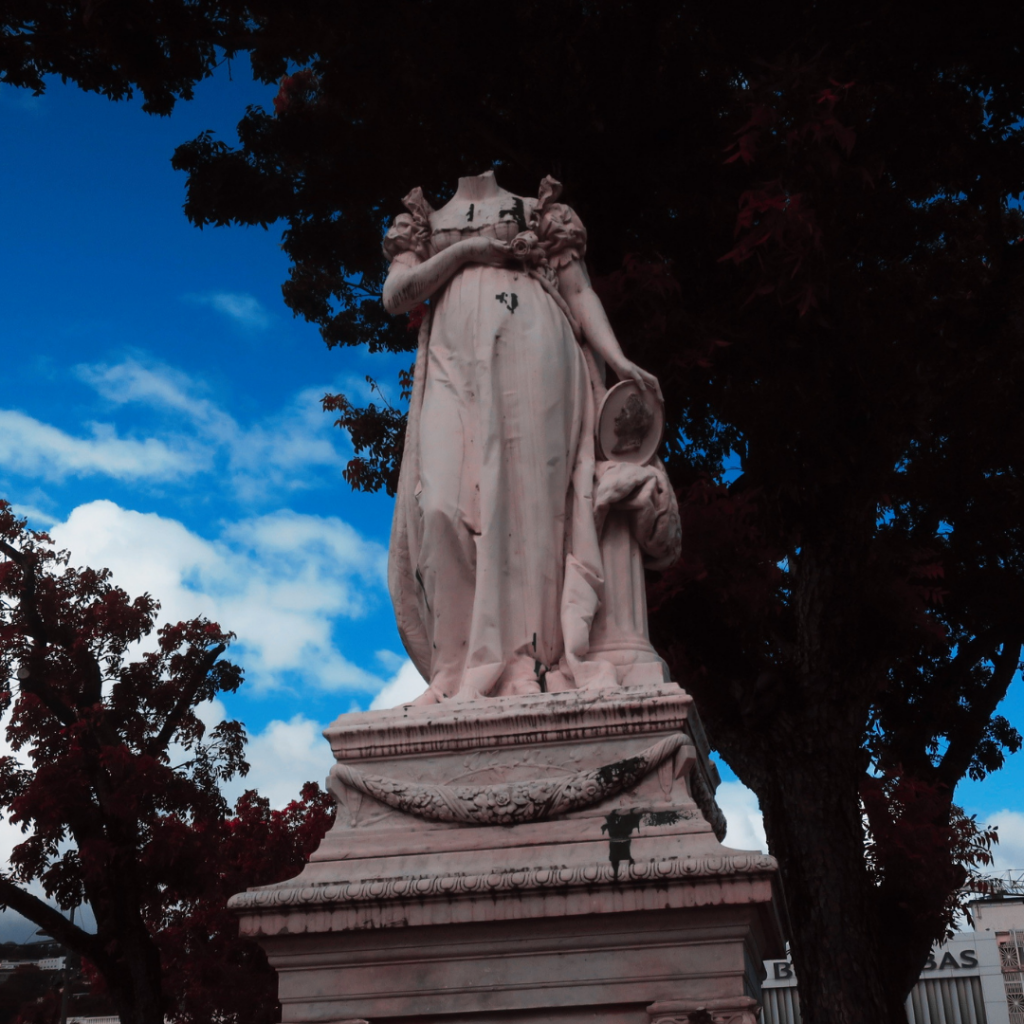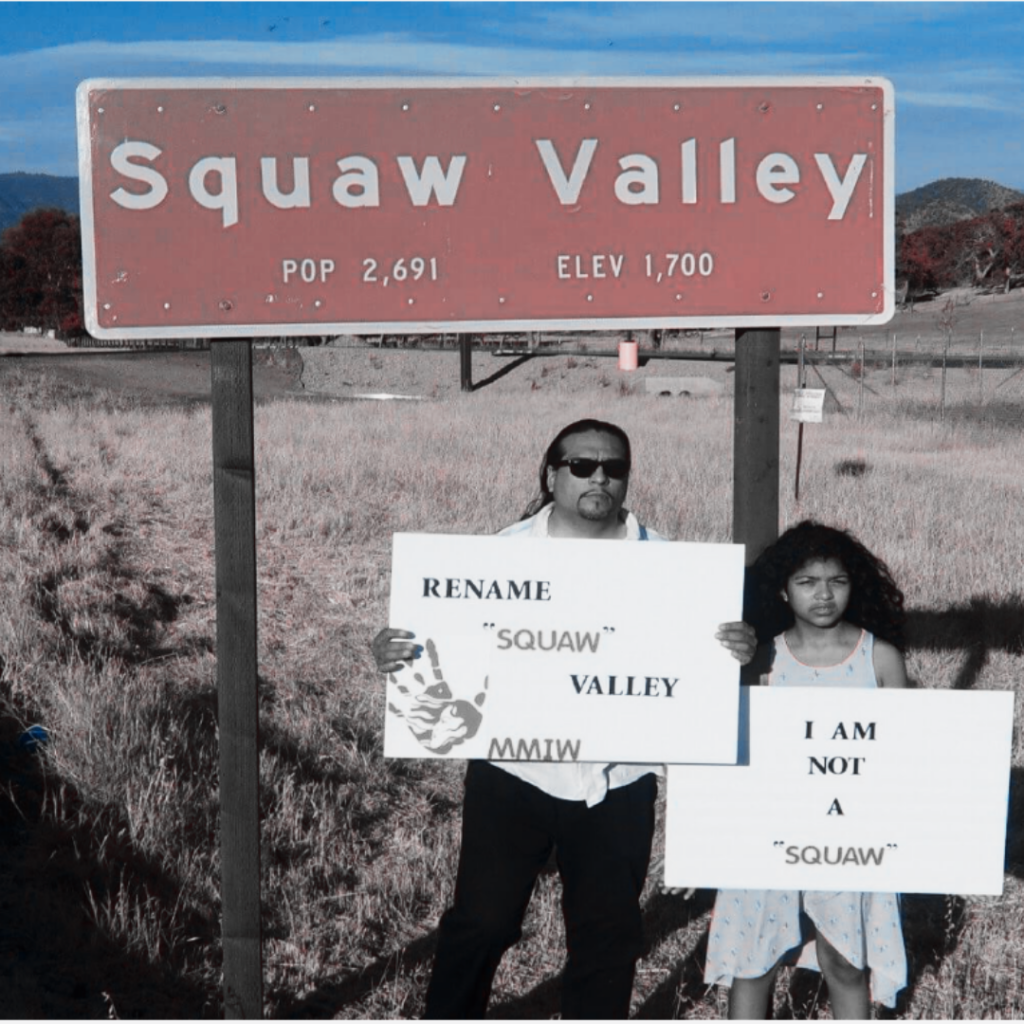Drawing from more than 510 Cases worldwide, the Contested Histories Initiative identifies three broad categories of remedies for addressing and resolving controversies over physical representations of historical legacies in public spaces: resignification, removal, and naming.
In all cases, the Initiative advocates for the centring of voices that have been marginalised by exclusionary historical narratives in the decision-making process to remedy a controversy.
Resignification
Resignification entails the transformation of the object’s signalling to the public. The least intrusive and fastest approach to resignification is to contextualise the historical legacy being represented, for example, via Placarding. Greater context works to balance and/or alter the meaning of certain historical narratives and/or clarify problematic iconography to provide a more nuanced lens through which to perceive the object and its legacy. Wording and language are crucial and should be sensitive to nuance. More complex, additive methods include Artistic Intervention and the installation of Counter Monuments, both of which are considered effective remedies to resignify and confront public silence. Resignification, whether it be via placarding, artistic intervention or counter monuments, requires a deliberative process, without which further controversy can result.
Placarding
The Netherlands: Jan Pieterszoon Coen in Hoorn
The statue of Jan Pieterszoon Coen in Hoorn has been disputed since its unveiling in 1893. After complaints by locals, it was not until 2011 that a contextualising plaque was added to the statue. The Black Lives Matter movement sparked new debates about Coen’s statue in Hoorn. The statue still receives much ongoing discussion and protests by people from all over the country. In September 2020, the city council discussed the citizens’ initiative of relocating the statue in a town hall meeting.
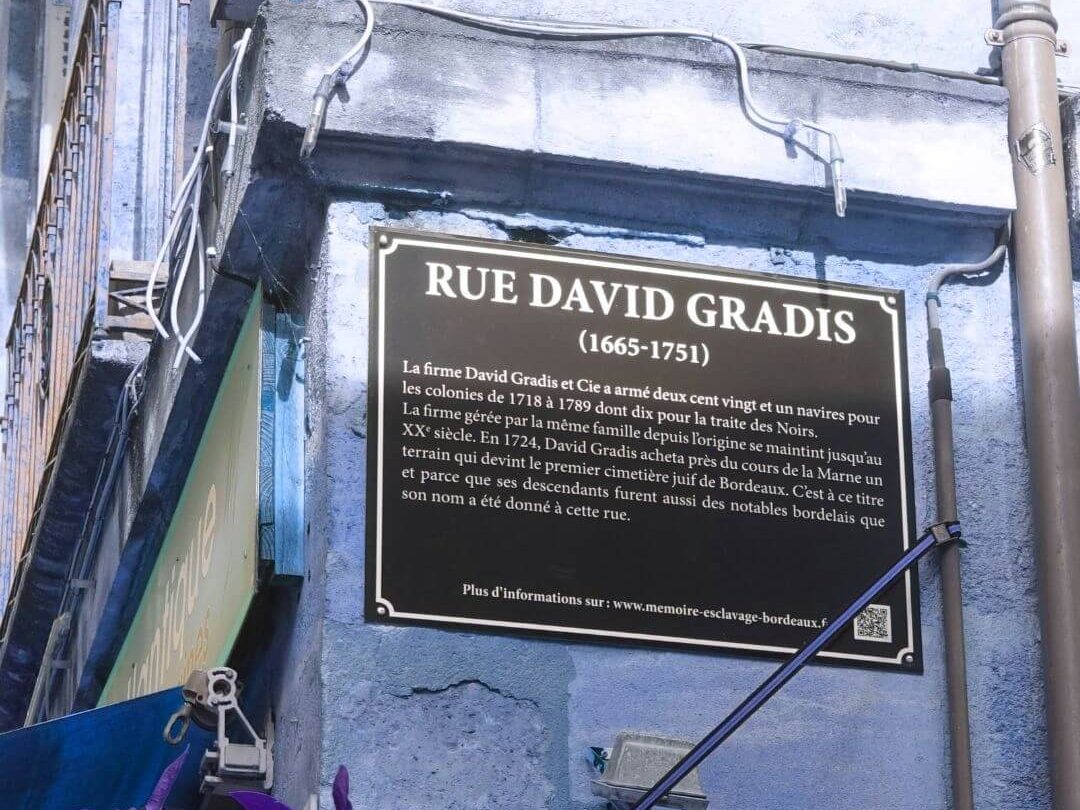

France: Street Names to Traders in Enslaved People in Bordeaux
Across France, a debate emerged surrounding streets that bear the names of traders in enslaved people. Activist groups either push for a contextualising plaque or renaming. In Bordeaux, street names have been contextualised with information on the history of their namesakes.
Artistic Intervention
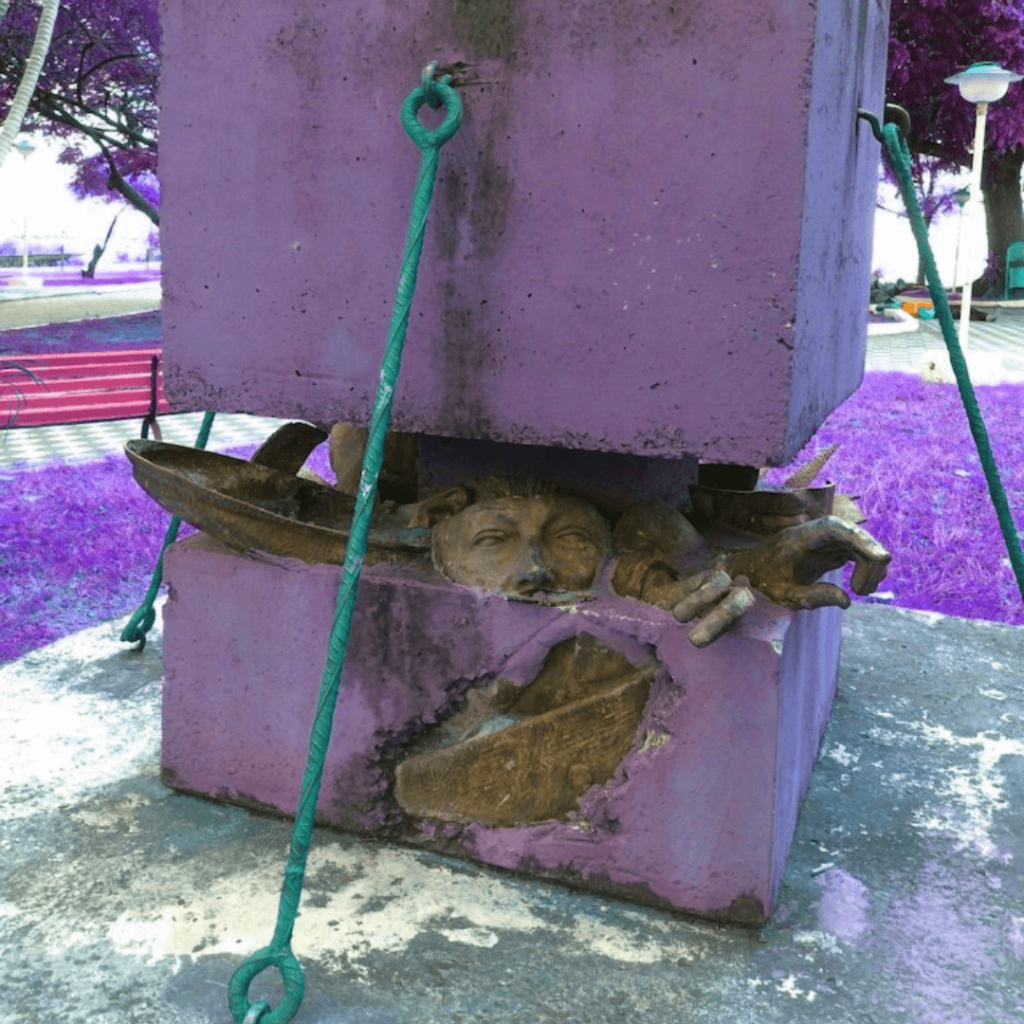

Paraguay: Statue of Alfredo Stroessner in Asunción
A statue of military dictator Alfredo Stroessner was toppled in 1991 in Asunción. Following the request of an artist, the monument was later severed and embedded between two concrete blocks, transforming it into a memorial that commemorates victims of the dictatorship.
Singapore: Stamford Raffles Statue
In 2019, Singapore commemorated its bicentennial and the 200th anniversary of the arrival of Stamford Raffles to its shores. For the anniversary, the statue was painted white on one side, making him seemingly disappear into the backdrop when viewed from the front. Four additional sculptures of nationally significant figures were installed along the river, successfully expanding the historical narrative of Singapore beyond one man.
The Complexities of Artistic Intervention as a Remedy
Starting with an introduction to the topic and a theoretical background, this paper identifies and compares different methods within artistic interventions. From the Lenin statue in Ukraine turned into Darth Vader to the cloaking of Columbus in the US or the painting of monuments in the Czech Republic and Bulgaria, it considers why certain monuments are contested and how this contestation has been addressed through art.
Counter Monument
South Africa: Ncome and Blood River Monuments on Ncombe River in Nquthu-Dundee
Across the river from a monument commemorating white settlers in the 1838 Battle over Blood River, a counter installation commemorating Zulu warriors was built. A bridge between the two sites on either river bank symbolises reconciliation.
Republic of Korea: Statue of Peace in Seoul
The Statue of Peace was erected by non-governmental organisations outside the Japanese embassy in Seoul, South Korea, in 2011 to memorialise women forced into sexual enslavement by the Imperial Japanese army before and during World War II. Inspired by this case, similar statues have appeared in San Francisco and Berlin, to name a few.
Removal
Removing a disputed object from public view, temporarily or permanently, may act as a remedy to de-escalate the potential for conflict. Temporary removal will allow time for reflection on and in-depth consideration of an object’s historical importance and appropriate text steps. For example, Relocation to a less prominent location, museum or statue park may be considered rather than permanently removing an object. Relocation may aid the resignification of an object and narrative. In light of evolving social values, permanent removal may be necessitated by problematic iconography and the reappraisal of historical figures or events within the contemporary memory landscape. Objects that are permanently removed may be kept in storage. Erasure of a historical object, for example, via the destruction of an object or inscriptions, is considered a last resort when no other option is feasible. This remedy is often employed during times of dramatic social or political change.
Relocation
Argentina: Columbus Monument in Buenos Aires
In 2013, an executive decision was made to relocate the monument of Christopher Columbus from the government house to a less prominent coastal location–looking out to sea towards Spain. Taking its place in Buenos Aires is a monument to Juana Azurduy, a guerrilla who fought for independence from Spain.
Lithuania: Grūtas Statue Park in Druskininkai
The Grūtas Statue Park was established in 2001 by businessman Viliumas Malinauskas and won the Nobel Peace Prize in the same year. Malinaukas requested the authorities grant him possession of the monuments so he could display them in a privately financed museum as an alternative to destruction. The park is home to 86 statues and busts of former communist heroes as well as other relics from the Soviet era, such as recreations of Soviet Gulag camps, including guard towers and barbed-wire fences. Statue parks have been established in India, Hungary and the Republic of China (Taiwan).
Erasure
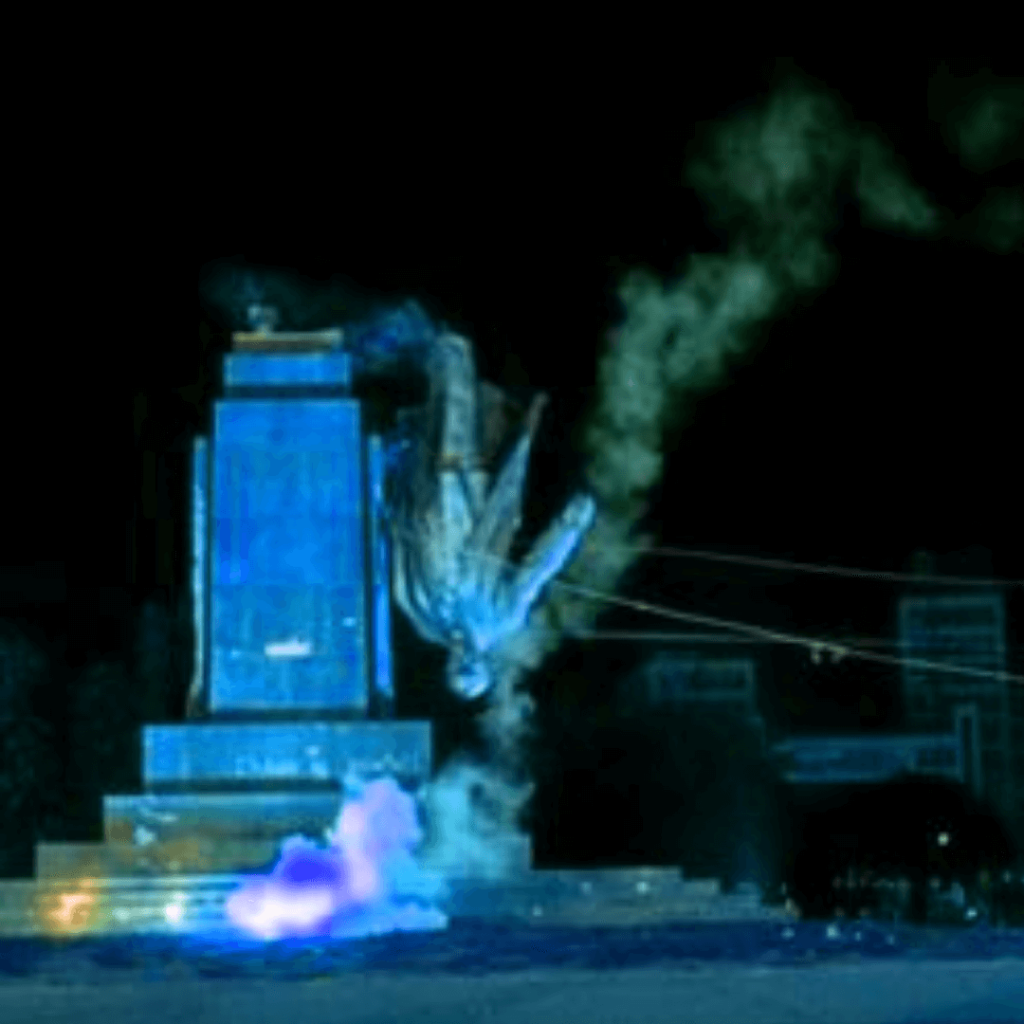

Ukraine: Leninopad
During widespread civil demonstrations dubbed Euromaidan that began on 21 November 2013, the demolition of statues of and monuments to Lenin became common. Their destruction was termed Leninopad, which literally translates to ‘Leninfall’. Demonstrations began after the Ukrainian government suspended signing an association agreement with the EU and shifted to creating closer ties with Russia. The destruction of statues and monuments to Lenin also occurred between 1990-1 and 2005-8.
Martinique: Statue of Joséphine de Beauharnais in Fort-de-France
The statue of Joséphine de Beauharnais, Napoleon’s first wife, stood in Martinique, one of the remaining overseas territories of France. Joséphine is said to have influenced Napoleon’s re-establishment of slavery in the French colonies. In 1991, the statue was beheaded amid decolonisation and anti-slavery movements and later stained with red paint. For almost three decades, the statue remained vandalised. The symbolic execution resignified the empress as a racist colonial figure to be shunned. The statue was pulled down in July 2020 amid global anti-racism protests.
Naming
Naming or renaming streets, buildings and other public spaces, such as squares and metro stations, can rebalance historical narratives and recognise marginalised or underrepresented figures or events. Changes to names provide the opportunity for acknowledgement, contextualisation and community engagement. However, care must be taken since renaming can also be the source of contestation.
Renaming
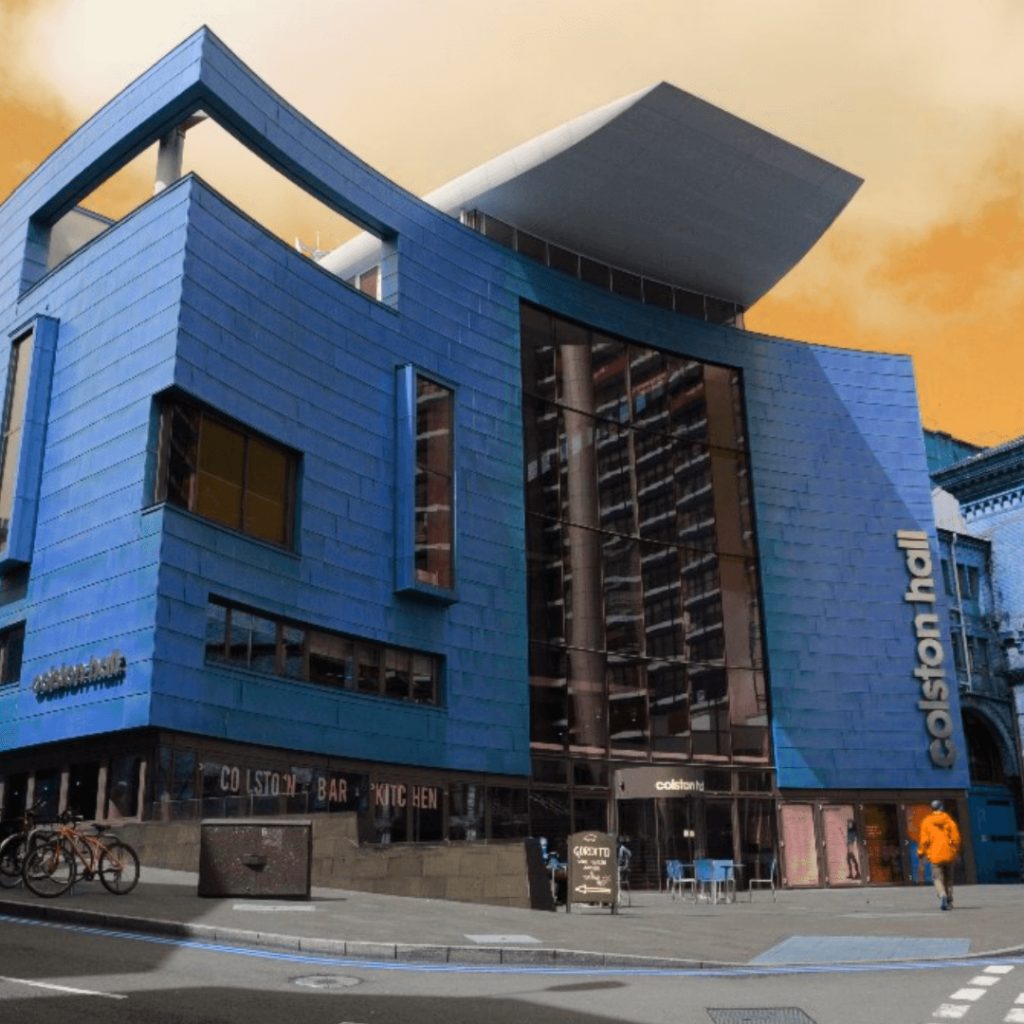

United Kingdom: Colston Music Hall in Bristol, England
In 2017, the Bristol Music Trust made a decision to rename the Colston music hall after waves of protests by civil rights activists, music lovers and artists, some of whom refused to perform in the Hall. The renaming project was conducted in collaboration with schools, creative associations and the Mayor of Bristol, who collectively came up with a new name: Bristol Beacon. Colston’s name was removed in June 2020 amid global anti-racism protests, and the new name was installed in September of the same year.
Squaw Valley in California, USA
The term ‘squaw’ (hereafter sq___) is widely considered an offensive, derogatory, racist and misogynistic word to refer to Native American women. In 2021, following the renaming of the Sq___ Valley ski resort in the unincorporated populated place in Olympic Valley in Placer County, California, to ‘Palisades Tahoe Ski Resort’, a petition was launched to change the name of the town of Sq___ Valley in Fresno County California by local Indigenous resident Roman Rain Tree. After two years of campaigning at the local, state, and national levels, the movement led by Rain Tree succeeded in getting the town’s name changed to Yokuts Valley in 2023. However, this campaign created serious division within the community, and many people are still opposed to the renaming.

